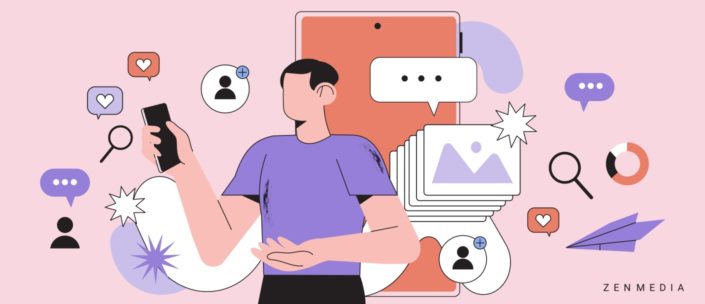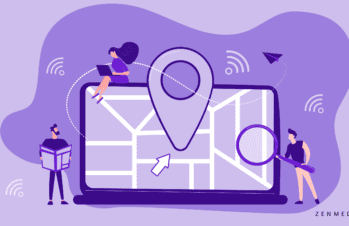What is B2B Social Media Marketing?
B2B social media marketing is the process of using social media platforms to market products or services through actionable, educational content and generates qualified leads that bring in lucrative contracts. From nurturing prospects to showcasing industry influence, social media has a ton to offer B2B brands.
How is B2B social media marketing different from B2C?
The main difference between B2C and B2B social media marketings is that the former focuses on selling to consumers while the latter focuses on selling to businesses. However, both types of marketing use social media platforms like Facebook, Twitter, LinkedIn, etc. for communication purposes.
Social media marketing for businesses has become increasingly important as consumers use these channels to search out information about products and services, compare prices, read customer reviews, and share opinions. According to recent studies, up to 90 percent of purchasing decisions begin with research done online. This means that the web is now the primary way that customers find, evaluate, and purchase products and services. As such, having a strong social media presence for B2B brands is essential for companies wanting to stand out from the competition today.
Does social media marketing work for B2B?
The effectiveness of social media marketing will vary depending on a company’s ability to align its B2B social media campaigns with specific business goals. However, there are a few things to know when it comes to B2B social media marketing.
First, it’s important to remember that social media is a great tool for building engaged audiences and a loyal community of followers who are interested in what your company has to offer. When executed correctly, B2B social media marketing nurtures relationships at each stage of the marketing funnel and drives sales from new and existing customers.
Why is Social Media Important for B2B?
That being said, companies everywhere are investing more resources in B2B social media. Why?
Because social media is critical for B2B brands that want to:
- Boost their reputation
- Increase their sales
- Earn trust
- Increase their market share
- Retain customers
- Increase customer loyalty
Let’s take a look at how B2B social media marketing addresses each of these goals.
1. Social media is where your customers are
Customer expectations for B2B have changed. Just a few years ago, a B2B brand could get away with having only a website and maybe a LinkedIn company page. Today, your buyers want to see you on at least one or two platforms.
Why? Because that’s where they are. It’s where they’re getting industry news, finding thought leadership pieces, getting familiar with industry frontrunners, and even initiating contact with sales.

It’s also where they’re spending much of the exploration and evaluation phases of the B2B customer journey, searching for relevant content, looking at how you handle customer service, reading reviews, and more.
Take a look at these B2B social media marketing statistics:
- 90% of consumers will buy from a brand they follow on social media (Sprout Social)
- 38% of customers prefer social media over other channels for resolving customer service issues vs. 42% who prefer phone and 20% who prefer email (Statista)
- 78% of customers believe that social media is the fastest and most direct way to connect with a brand (Sprout Social)
These consumers are your buyers. They’re majority Millennial, digital-savvy, and used to doing everything online. If your B2B social media presence is nonexistent, then consumers are likely to pass right over you and move on to your competitors.
The simple truth these days is that brands that aren’t active on social look stagnant.
Whether it’s Instagram, Facebook, LinkedIn, Twitter, TikTok, or Clubhouse, find at least one platform that will work for you—make sure it’s the one that your customers use the most—and invest the time and resources necessary to develop a B2B social media marketing strategy that builds a robust and engaging presence. This will go a long way toward boosting your brand reputation and earning trust online.
Related read: What’s Clubhouse? Everything You Need to Know About the New Platform
2. B2B social media marketing drives traffic to your website
Even if you’re not ready to start selling via social media, it is an important way to increase your site traffic and direct users to specific pages.
Landing pages, content downloads, free demo sign-ups—social media in B2B marketing is key in getting users to the places you want them to be.
Paid ads also perform this function, but users are increasingly distrustful of advertising (74% of consumers think they see too many social ads, according to Survey Monkey).

This means that you simply can’t rely on ads alone and that social media has to play an even larger role in directing people to the right places.
By delivering value through information or entertainment in a format that your buyers are already familiar with and using regularly, your B2B social media posts can be a much more effective way to increase traffic where it matters the most. Thus, consider the following guide to edit photos and tips for making a great video to create high-quality visuals and increase brand awareness.
This, in turn, can lead to increased sales and an increase in new customers.
3. Buyers are using LinkedIn to seek out and connect with B2B brands
LinkedIn was already a major player in the B2B world pre-pandemic. With the upheaval that came in 2020—including the huge increase in all-digital B2B selling and buying—LinkedIn’s role has only gotten larger.
LinkedIn’s own statistics bear this out.
When it comes to usage, LinkedIn’s platform has 61 million “senior-level influencers”—people who influence business decisions at their organizations. In addition, 4 out of 5 users on LinkedIn drive business decisions in some fashion, and 33% of B2B decision-makers are using the platform to research their purchase decisions.
This is an audience you can’t afford to overlook.
When it comes to what you should be sharing on LinkedIn, think of B2B thought leadership content, insightful commentary on news stories, industry issues, or current events, and of course, the content your brand is creating. Live streaming on LinkedIn is also a great way to connect with potential customers, as live streams on the platform receive 7x more reactions and 24x more comments than regular video posts.
4. B2B social media marketing supports a more personalized customer experience
Personalization is what both B2C and B2B customers demand, and social media helps your brand deliver in multiple ways.
For one thing, B2B social media marketing offers customers a more human view of your brand, especially if you’ve been diligent about developing your brand voice.
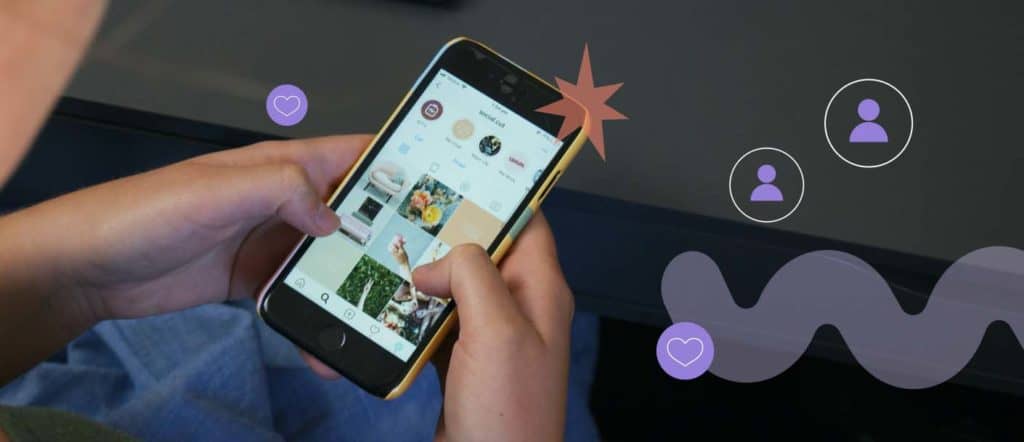
Related read: 5 Steps to Developing an Outstanding Brand Voice on Social Media
B2B buyers, just like B2C consumers, expect to be able to connect directly with the brands they’re working with. That means getting a personal, human response when they ask a question or post about their experience with your brand.
Customer retention starts with connecting with them on this level, anticipating their needs, and responding to them quickly and empathetically.
But while your customers benefit from your B2B brand’s social media presence, your company stands to benefit even more.
Interacting with your customers on social platforms lets you get a clearer picture of what they value and engage with.
When you share content on social, for example, the number of engagements can show you the general degree of interest your customers and potential customers have in that type of content. You can even ask outright for their feedback and get their opinions firsthand (otherwise known as collecting zero-party data).
The data you gather via social media analytics can also help you further hone your B2B content marketing strategy, paid ads strategy, and even product and service offerings. Just as social media for B2B allows your customers to see who’s behind your brand, it also allows you to see your customers for who they are online—their interests, needs, desires, and more.
5. B2B buyers are more interested in self-service now than pre-pandemic
According to a McKinsey study, 97% of B2B buyers said they’d be comfortable using a fully digital, self-service model to make a B2B purchase, with most of that group comfortable spending $50k or more.
How does social media play into this?
Chatbots, for one—social chatbots, like the type brands can employ on Facebook, are one way to offer digital self-service.
Social media posts can also direct users to your self-service channels if they’re housed on an app or your website. From text-based knowledge bases to video channels and customer preference databases, B2B buyers want to be able to access your resources on their own without needing to go through a salesperson or representative.
6. B2B social media marketing can amplify your B2B PR results
Finally, social networks are ideal for amplifying your B2B PR placements and, as a result, increasing your share of voice in your industry.
Many brands, and even B2B PR agencies, overlook this critical step. Once press hits are secured, they stop their efforts.
However, if you’re not amplifying your PR coverage by sharing it, repurposing it, and using it to support further marketing efforts, your brand is only getting a small percentage of the benefits that it could be.
While it’s true that the outlets you’ve been covered in will share the article, podcast, etc., you also need to be sharing it on your social channels. This will not only increase the reach of your press mentions—it will serve as a form of social proof and help establish trust that your business is legitimate.
There’s arguably no better place to promote PR hits than social networks to cement your credibility to potential buyers. With so much competition among B2B brands, anything you can do to convey authority and lower barriers between your business and prospects is a plus.
Social media platforms best for B2B
LinkedIn for B2B
All social channels have a place in B2B marketing, but some social media platforms reign superior among B2B audiences than others.
As mentioned earlier, LinkedIn is one of the most popular platforms among B2B audiences, as it allows businesses to connect with other businesses, engage with potential customers, and, if leveraged correctly, position themselves as industry thought leaders. LinkedIn’s variety of tools and features, like LinkedIn Newsletters, make it possible for B2B brands to build brand awareness, grow a regularly engaged audience, and funnel in new leads.
Twitter for B2B
Twitter is another popular B2B social media platform as it acts as a gateway for brands to start building personal relationships with industry experts, influencers, and other like-minded people. Executive thought leaders can leverage social listening to gain an understanding of their audience and utilize the immediacy of Twitter to spot trends, start two-way conversations by interacting with followers 1:1, and maximize engagement.
Unlike other platforms, Twitter provides brands with a unique opportunity to get vulnerable, amplify diverse voices and perspectives, and build a loyal community of meaningful connections. Twitter enables companies to adopt a true customer-centric B2B social strategy.
Instagram for B2B
Instagram can be used to build brand awareness, create leads, and generate sales for B2Bs. In order to use Instagram for B2B marketing, you first need to create an Instagram account for your business. Once your profile is complete, you need to start posting photos and videos. You can post photos and videos of your products, your team, your office, and your customers. You can also post quotes and infographics that relate to your industry.It’s important to post regularly and to use relevant hashtags. You can use the hashtag search bar to find relevant hashtags for your industry. You can also use the geotag feature to tag your photos and videos with the location of your business.
If you want to use Instagram for B2B marketing, you need to create an Instagram account for your business, fill out your profile with relevant information, and start posting photos and videos.
B2B Social Media Marketing Examples
Hootsuite
Hootsuite is another company that is killing it on social media. Their B2B social media marketing strategy is focused on providing content that is both entertaining and educational. They also use a variety of platforms to share their content, which helps them reach a larger audience.
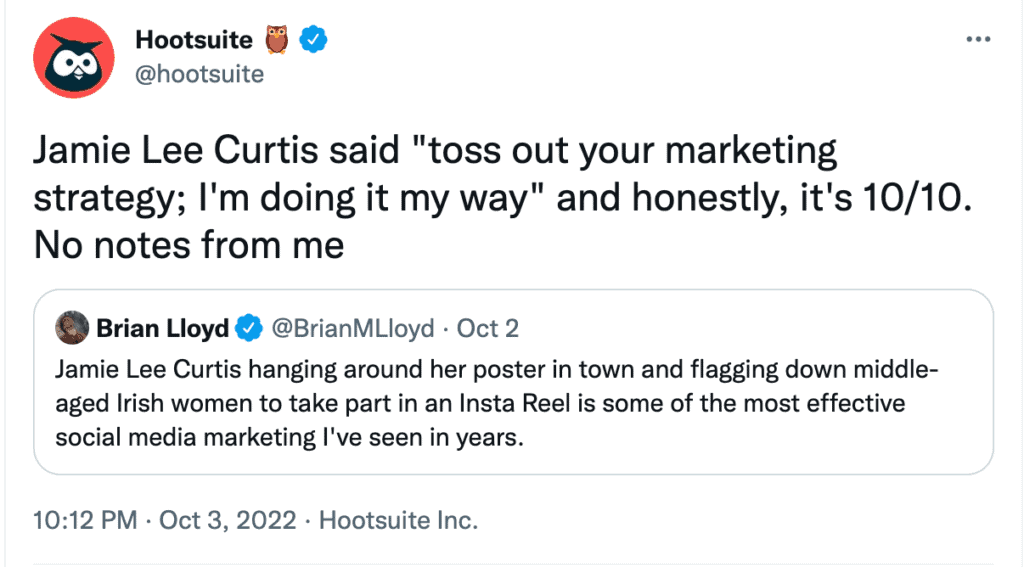
IBM
IBM is a company that is constantly innovating, and they’ve applied that same philosophy to their B2B social media marketing. IBM uses a variety of platforms to share content that is relevant to their audience. They also use social media for B2B to provide valuable content that helps their followers improve their businesses.
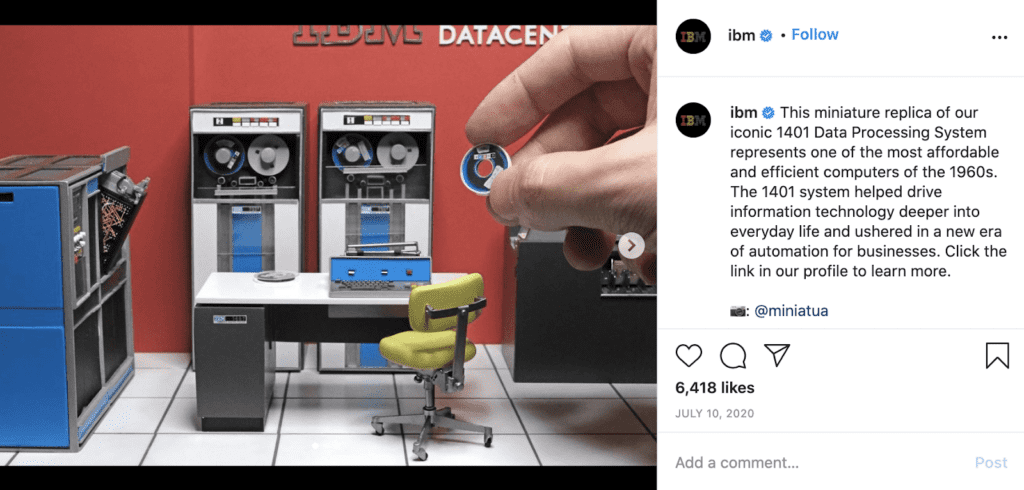
Dell
Dell is a company that is always looking for new and innovative ways to reach their audience. They’ve had great success using social media to share content that is relevant to their audience. Dell also uses social media to provide valuable content that helps their followers improve their brands.

5 B2B Social Media Marketing Best Practices
When it comes to social media marketing for businesses, there are a few best practices that should always be kept in mind. Here are the five that we think are the most important:
1. Have a solid B2B social media marketing strategy
This one should be obvious, but it’s still worth mentioning. Without a plan, your social media marketing will be aimless and ineffective. Take the time to figure out what you want to achieve on social media, and develop a strategy that will help you reach your goals.
2. Know your audience
Another important part of a successful B2B social media marketing strategy is understanding your audience. Who are you trying to reach with your marketing? What do they like and dislike? What kind of content will appeal to them? Once you have a good understanding of your target audience, you can create content and messaging that resonates with them.
3. Be consistent
One of the most important things you can do for your B2B social media marketing is to be consistent. Post regularly, and make sure that the content you’re sharing is high quality. If you can’t commit to posting regularly, it might be a better idea to hold off on social media until you can.
4. Use social media for B2B to build relationships
One of the main goals of social media marketing is to build relationships with potential and current customers. Use your B2B social media accounts to engage with your audience, and be responsive to their comments and questions. The more engaged you are with your audience, the more likely they are to convert into customers.
5. Measure your results
Finally, make sure to track the results of your social media marketing efforts. This will help you to determine which strategies are working best for you, and which ones you need to adjust. Use analytics tools to track things like website visits, conversions, and engagement rates.
6. Consider AI
By delivering value through information or entertainment in a format that your buyers are already familiar with and using regularly, your B2B social media posts can be a much more effective way to increase traffic where it matters the most. Thus, consider the following guide to editing photos using Picsart’s quality-enhancing AI tool and tips for making a great video to create high-quality visuals and increase brand awareness. With Picsart’s AI-powered tool, you can enhance the quality of your photos by adjusting brightness, contrast, and other important aspects, ensuring that your visuals stand out and make a lasting impact on your audience.
Wrapping Up
B2B social media is here to stay. It’s one of the most efficient and effective ways for B2B companies to build their brand and connect with their audience. The days of buyers’ just visiting a website to make purchasing decisions are over. Focus on nurturing long-term relationships with business owners and decision-makers by positioning your brand as an industry expert.
To get started on your B2B social media marketing, get in touch today!

